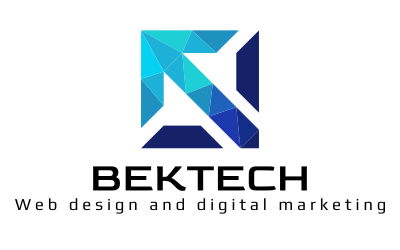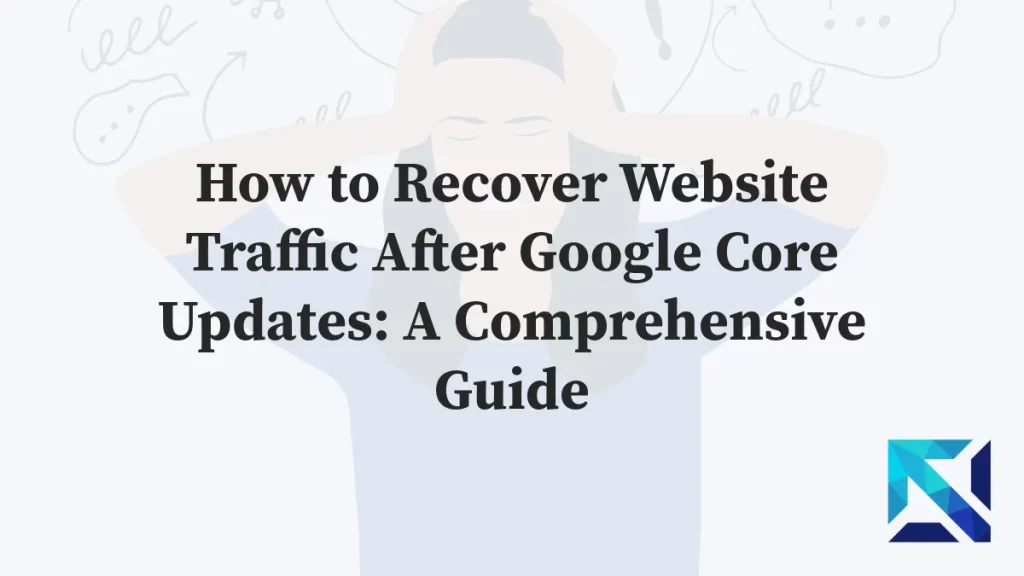In the vast and constantly updated world of search engine optimization (SEO), technical SEO is often overshadowed by more flashy tactics such as keyword research and content creation. While these elements are undeniably important in driving traffic to a website, downplaying the role of technical SEO makes the other elements completely irrelevant. The reason for this is that slow-opening websites negatively affect user interaction and search engines assign these websites to the later pages in the search results. The result of this event is that your efforts such as keyword research and content creation are almost ignored.
One of the crucial elements of technical SEO is conducting a thorough technical SEO audit. This audit involves carefully evaluating a website’s technical infrastructure to identify any issues that could potentially impact its performance in search engine rankings. By identifying and addressing these issues, website owners can optimize their sites for search engines, ultimately enhancing visibility and increasing the likelihood of attracting organic traffic. In this comprehensive guide, we will explore the significance of technical SEO audits and provide a checklist of key areas that should be assessed to improve a website’s search engine performance.
Why Are Technical SEO Audits Important?
Technical SEO audits are essential for ensuring that your website is search engine friendly. These in-depth analyses pinpoint technical issues that hinder search engines from properly crawling, indexing, and understanding your website. By addressing these roadblocks, you can improve your website’s visibility in search results, ultimately driving more organic traffic and boosting your bottom line.
Improved Website Performance

One of the primary benefits of a technical SEO audit is the improvement of website performance. Technical issues such as broken links, slow page load times, and duplicate content can negatively impact the user experience and lead to an increased bounce rate. By addressing these issues, you can improve the overall performance of your website and provide a better user experience.
For example, opening a few seconds late causes the visitor to leave the website before your website is fully open. Considering that we live in a fast age, it is an undeniable fact that this event is inevitable.
We will discuss all these processes in the following parts of our article.
Better Search Engine Rankings
Search engines use sophisticated algorithms that consider a variety of factors when determining the relevance and authority of a particular website. These algorithms analyze everything from the content on the site to the technical aspects of the design. One important aspect that can affect a website’s ability to rank well in search engine results pages (SERPs) is technical SEO issues. These issues can range from broken links and slow page load times to incorrect title tags and missing alt text in images. By identifying and addressing these technical SEO issues through a thorough audit, website owners can greatly improve their chances of ranking higher in search results, ultimately driving more traffic to their site and increasing their online visibility.
One of the most important components of technical SEO is fast opening websites. Search engines regularly crawl websites and save the results in their database. The simplest example of this is the tags provided by search engines that you add to your website.
For example, when you add a Google Analytics tag to your website, the task of the tag is to measure the page loading speed of visitors entering your website. In this way, the performance of your website in the real world is revealed. In addition, tags such as Google Tag Manager and Clarity do the same task.
Increased Organic Traffic
By improving your website’s performance and search engine rankings, a technical SEO audit can also lead to increased organic traffic. As your website becomes more visible and ranks higher in search results, you can expect to see a boost in organic traffic, which can ultimately lead to more conversions and revenue.
Technical SEO Audit Checklist
When conducting a technical SEO audit, it’s essential to cover all the key areas that can impact your website’s performance. Here is a checklist of the most critical elements to assess during a technical SEO audit.
Website Architecture
The structure of your website is a key factor in determining how well it performs in search engine rankings. A website that is well-organized with a clear hierarchy makes it much easier for search engines to crawl and index your content effectively. When conducting a technical SEO audit, it is important to thoroughly evaluate various aspects of your website structure.
What is the Importance of URL Structure in Technical SEO?
It is important to consider the URL structure of your website. Are your URLs descriptive and easily readable by both users and search engines? Do they contain relevant keywords that accurately reflect the content on the page? Making sure your URLs are optimised in this way can have a significant impact on your search engine performance.
The URL structure needs to match the content of the page. For example, let’s say you have a page about “Technical SEO Services”. On this page, you explain your services to your visitors in detail. The structure of this URL should be “website.com/technical-seo-services”. Because your keyword accordingly, your page content has been prepared with these words.
If you use a URL structure in this way, it will be easier for search engines to index your site. It will also make the linking you do for the website easier and more understandable.
What is the Importance of Navigation in Technical SEO?

Another important aspect to consider during a technical SEO audit is your website’s navigation. Is your website navigation intuitive and user-friendly, making it easy for visitors to find the information they are looking for?
What is Intuitive and User-Friendly Navigation?
Intuitive and user-friendly navigation means designing and organising the interface of a website or application in such a way that users can effortlessly find their way around and access the information or features they need without confusion or frustration. This includes clear labelling, logical structure, consistent placement of elements, and the use of familiar icons and layouts that align with users’ expectations based on their past experience on similar platforms.
The goal is to minimise the learning curve and cognitive load, allowing users to intuitively navigate the interface as if guided by instinct. This approach increases user satisfaction, interaction and overall user experience, making it a fundamental aspect of good user interface and user experience design.
Some HTML tags added to the navigations provide convenience to users who need it in terms of accessibility. For example, when you add the Some link text” tag, when a screen reader encounters the link, it will write “Some link text A description for the link”.
The developer should use the aria-describedby attribute as their preferred implementation. Developers can also create ARIA labels using the aria-label and aria-labelledby attributes.
The assistive technology recognizes an ARIA description in addition to the anchor text. However, the assistive technology substitutes the ARIA label for the link text. As a result, links with ARIA tags can provide a poor user experience for speech recognition software. If the ARIA tag does not at least partially match the link text, the speech recognition software may not function properly.
What is the Importance of Having a Sitemap?
It is also important to make sure you have a sitemap for your website. A sitemap is a file that lists all the pages on your site, helping search engines understand the structure of your website and index all your content. It is very important that you regularly update and submit your sitemap to search engines to ensure that all your pages are properly crawled and indexed. By adding a sitemap as part of your technical SEO strategy, you can help improve your website’s overall performance in search engine rankings.
Website Speed
Website speed is a crucial factor in both user experience and search engine rankings. A slow-loading website can lead to a higher bounce rate and negatively impact your website’s visibility in search results. During a technical SEO audit, you should assess the following:
Page Load Times
How long does it take for your website to load? Are there any specific pages that are particularly slow?
When examining page load times, it is crucial to aim for a benchmark that is in line with web standards. Google’s research has shown that the optimal page load time should be 3 seconds or less. It has been observed that pages that take a long time to open have high bounce rates. Especially in the fast and information age we live in, your visitors may turn to web pages that open faster.
To achieve this, it is necessary to optimize images by compressing them without losing quality. For example, WebP, the format created by Google, allows you to compress images without losing quality. You can perform this compression using various online tools. Using the browser cache means that returning visitors will see pages that open more quickly.
To minimize HTTP requests, your website needs to go through a proper development phase. When we talk about WordPress, choosing the right theme and plugins is of utmost importance. Our recommendation is to use a hybrid.
When loading the page, focus on critical aspects such as using techniques like lazy loading for resources that the user does not need at first launch.
Using content delivery networks (CDNs) speeds up delivery by serving content from locations closer to the user. A well-functioning CDN, such as Cloudflare, can provide real performance gains and security. Minimize and avoid the use of render-blocking JavaScript and CSS, which can delay the initial render time.
Tools such as Google PageSpeed Tools, GTMetrix, etc. can provide valuable insight into performance issues that need improvement and suggest actionable steps to improve the loading performance of your site, making it not only technically sound but also user friendly.
Image Optimization
Are your images optimized for web use? Large, unoptimized images can significantly impact page load times.
Optimizing images for your website is one of the most important strategies to improve website performance and, in turn, user experience. Large and unoptimized images can significantly increase page load times. These late-loading images will drive away users who visit your website. The image optimization process involves several important steps.
The first thing you need to do is to resize the image sizes. What you need to pay attention to when resizing is the width of the space you allocate for the image on your website. If you put a 4000px wide image in an area of 400px, this will be both unnecessary and cause the image size to be high.
To avoid such situations, as I mentioned in the example above, resize your 4000px image and reduce it to 400px. Once resized, you can compress the image with online tools or even convert it to WebP format.
You need to be careful when choosing a file format. Choosing the wrong file format can put you in a difficult situation. JPEG images are one of the best options for photos thanks to their compression algorithm. PNGs can be used for images that require transparency. But the file sizes can be a bit large.
This is where newly developed file types with better compression, such as AVIF and WebP, come to our aid. These file types support transparent images and will significantly improve the performance of your website. But what you need to pay attention to here is browser compatibility. In 2024, most browsers support this format, but still very few users’ browsers do not support this format.
Using responsive images is vital. This technique provides the user with a fast and visually pleasing experience by presenting different resolution versions of each image. This technique not only increases page load speed but also conserves data usage. It is beneficial for users on mobile networks.
A lazy loading technique is when the image is loaded when the page is opened and the user arrives at the place where the images are located. This technique speeds up page load times. It increases user interaction. You can use content delivery networks (CDN) to serve images faster. In this way, when the user wants to see the image, they will be able to see the image from the server closest to their geographical location.
Web developers, designers and even you can improve page load times by implementing these strategies on your own website. Improving page load times not only improves the user experience. It is an important improvement in terms of SEO as search engines prefer faster loading pages.
Caching
Are you using caching to improve website speed? Caching can help reduce server load and improve page load times.
Caching is a powerful technique that allows Websites to store copies of files and data results in a temporary location for faster access on subsequent requests. It avoids the need to recreate and present the files to the user over and over again for each different request. As a result, it helps optimize costs by reducing server load. In the context of popular content management systems (CMS) such as WordPress, Shopify, and e-commerce platforms, caching is a technique that should not be avoided. It plays an important role in optimizing performance for websites with high traffic or complex content structures.
For WordPress websites, caching can be implemented on several levels, from the browser level to the server-side level. Plugins like W3 Total Cache, and WP Optimize have many options for page, database, and object caching. These plugins can greatly improve the efficiency of a WordPress site. By storing static versions of the site’s pages and posts, it ensures that content-heavy pages load faster for returning visitors. It also provides optimized assets for new visitors.
Shopify, on the other hand, also uses caching but manages it differently due to its proprietary hosted platform structure. Shopify automatically uses several caching mechanisms to optimize the performance of Shopify stores. For example, Liquid template caching helps speed up the creation of store themes, while CDN (content delivery network) caching ensures that static assets like images and stylesheets are delivered quickly to users around the world. Store owners can also take advantage of browser caching through specific settings and policies provided by Shopify to further improve the user experience.
Since search engines tend to favor sites that load faster, effective use of caching in both WordPress and Shopify can lead to significant improvements in site speed, user experience, and even SEO rankings. However, it’s important to manage caching properly, as overly aggressive caching can lead to problems such as serving outdated content to users. Finding the right balance and regularly cleaning and updating the cache is critical to maintaining optimal web performance.
Mobile Responsiveness
With the majority of internet traffic coming from mobile devices, it’s crucial to ensure that your website is optimized for mobile use. During a technical SEO audit, you should assess the following:
Mobile Friendly Design
Does your website have a responsive design that adapts to different screen sizes?
A mobile-friendly design in web development offers a better user experience by increasing the accessibility of websites. There are many techniques to realise this. The most important is the use of CSS media queries. It improves the appearance of the website on mobile versions. For example, the use of a grid makes the elements in it more mobile responsive. Of course, it is CSS media queries that make it compatible with various screen resolutions. With this technique you can avoid the need for horizontal scrolling (page overflow) or zooming.
Considering that almost the entire world uses touchscreen phones, it is an important issue to create elements that can be easily touched. Using icons with space between them instead of adjacent icons makes it easier to touch. However, it prevents wrong navigation. It is necessary to pay attention to this situation especially in menus. Using a hamburger menu will result in better results. As I just mentioned, the user’s navigation within the site will be more comfortable.
It is in a really important position in accessibility. Being easily read by screen readers or being able to read text without screen zooming contributes greatly to accessibility. Together with other assistive technologies, it makes the web more accessible to disabled users.
The implementation of the strategies I mentioned above not only increases the usability and accessibility of your website on mobile devices, but also fulfils the requirements of SEO.
In this way, you can start to appear more in search engines, which will attract more organic traffic. The fact that many users are currently using their mobile devices to get information quickly should make you consider mobile responsiveness on your website. Given these conditions, mobile responsiveness is a necessity, not an option.
Mobile Page Speed
How does your website perform on mobile devices? Are there any specific issues that need to be addressed?
The opening speed of your mobile pages is of great importance for the overall performance and user experience of your website. With the increase in mobile internet usage due to mobile device usage, fast opening web pages are among the must-haves today. Research, including research conducted by Google, has observed that page load times exceeding 3 seconds increase the bounce rate by 33%.
The research I mentioned above is a situation that should be taken seriously in terms of keeping users coming to your website and increasing interactions. The speed item we mentioned directly affects this situation.
Technically speaking, optimizing mobile page speed requires a careful approach. The most basic strategy is to optimize large images, which contribute significantly to page load issues. Sizing and compressing your images appropriately will give you a leg up on performance. For example, a next-generation file type such as WebP will do the trick. The reason why this optimization is the most basic and most important is that images make up a large part of your website.
The next most important step after image optimization is to optimize the code of front-end user-loaded style and functionality files such as CSS and JavaScript. You especially need to minify these files. However, before minimizing, you need to remove the codes you do not use from the file.
One thing you should not skip here is that extracting code from these files on platforms such as WordPress and Shopify can give you a serious headache if you are not a professional developer. You can get help from your expert team for this. There are also various plugins for WordPress that do this. Still, you may need expert support most of the time.
While optimizing the codes, we cannot ignore compressing the HTML structure. Although compression technologies such as gzip and brotli available on most servers provide good compression, sometimes drag-and-drop page builders such as Elementor and Divi used in systems such as WordPress can generate extra unnecessary code. The best way to avoid this is to keep WordPress as simple as possible.
It is also useful to use browser caching, which allows resources to be stored locally in the user’s browser. This technique stores frequently accessed resources in the browser cache of the user visiting the site and ensures that the page opens faster on the next visit.
You can also use lazy loading to allow the user to load images when they need them. You can ensure that images that the user does not see at first sight when the page is first opened load as they scroll the page. This gives you a big performance boost.
By using a content delivery network (CDN), you can reduce the distance between your website server and your users. CDN providers in particular have servers in multiple geographical locations, which is great for providing a better experience for your website visitors.
Ensuring fast server response times is also very important and is usually achieved by optimizing server configuration, using efficient server-side caching, and choosing a performance-optimized hosting solution.
Doing the aforementioned optimizations without optimizing your server, which is the source of everything, will not ensure full performance. You can improve performance by optimizing your server configuration. For example, by using a server-side caching system, you will both put less load on your server and increase your page opening speeds.
In short, mobile responsive pages on your website require a comprehensive approach that includes image, code, efficient resource loading strategy and a good server configuration. Do not forget that page speed has a direct impact on user experience. If your mobile web pages have page speed problems, the bounce rate will be high. As a result, you will start to fall behind in search engines. Technical SEO is indispensable for this reason.
Mobile Usability
Is your website easy to navigate and use on a mobile device?
The reason why mobile usability is important for your website is that search engines attach great importance to the mobile experience. Especially after recent developments, the ranking algorithm has evolved on this. This has made mobile usability one of the cornerstones of technical SEO.
Ensuring the mobile usability of your website consists of several steps. It needs to adapt to multiple screen sizes in an irresponsible way. This includes easy clickability of links on the page and navigation menus that meet the needs of simplicity and speed.
Readable font sizes and the right choice of colors also play an important role. If you pay attention to all these and increase mobile usability, search engines like Google will rank you higher.
On-Page SEO

On-page SEO refers to the optimization of individual web pages to improve their search engine rankings. During a technical SEO audit, you should assess the following:
Title tags and meta descriptions are important components of your website that should be optimized for relevant keywords in order to improve your search engine rankings. Make sure your title tags accurately reflect the content of your pages and include targeted keywords to help users and search engines understand what your page is about. Similarly, meta descriptions provide a brief summary of your page’s content and should also be keyword-rich to attract users to click through to your site.
Using header tags, such as H1, H2, H3, etc., can help structure your content and improve readability for both users and search engines. By organizing your content with header tags, you make it easier for readers to skim your page and quickly find the information they are looking for. Search engines also use header tags to understand the hierarchy and importance of your content, so using them strategically can have a positive impact on your SEO efforts.
Keyword usage is essential for optimizing your website’s content for search engines. By using relevant keywords throughout your content, you signal to search engines what your page is about and improve the chances of ranking higher in search results. However, it’s important to use keywords naturally and not overstuff your content with them, as this can have a negative impact on your SEO efforts. Be sure to do keyword research to identify the best keywords to target for each page of your website.
Having duplicate content on your website can harm your search engine rankings as search engines may have difficulty determining which version of the content to display in search results. It’s important to regularly check your website for duplicate content and take steps to remove or consolidate it. This can involve using canonical tags to indicate the preferred version of a page, setting up redirects, or re-writing content to make it unique. By addressing duplicate content issues, you can improve your site’s visibility in search results and avoid penalties from search engines.
Indexing and Crawling
Search engines rely on bots to traverse the vast expanse of the internet, crawling and indexing websites to gather information on their content and organization. This process allows search engines to accurately understand the structure and relevance of each website they encounter. In the realm of technical SEO audits, it is crucial to thoroughly evaluate certain key aspects to ensure optimal performance and visibility. These aspects include but are not limited to the following:
One crucial element to consider during a technical SEO audit is the presence of a robots.txt file within your website’s directory. This file serves as a directive for search engine bots, indicating which pages they should crawl and index, and which pages should be excluded from their search queries. By verifying the existence and accuracy of your robots.txt file, you can guarantee that search engine bots are navigating your website in a manner that aligns with your intentions.
Another critical area to examine during a technical SEO audit is the presence of any potential indexing issues within your website. It is essential to ascertain whether all relevant pages on your website are being effectively indexed by search engines, as any oversight in this regard can drastically impact your site’s visibility and ranking in search results. Identifying and resolving any indexing issues promptly can significantly enhance the overall performance and reach of your website.
Furthermore, broken links pose a notable concern during a technical SEO audit, as they can impede search engine bots from effectively navigating and crawling your website. Broken links not only disrupt the user experience but also hinder the search engine optimization efforts of your site. By conducting a thorough assessment of your website for broken links and promptly addressing any issues discovered, you can ensure that search engine bots can efficiently navigate and index your site, leading to improved visibility and search engine rankings.
Backlinks

Backlinks, also known as inbound links, are hyperlinks on other websites that direct users to your own website. These links are crucial for search engine rankings as they serve as a vote of confidence from other websites. In order to effectively boost your website’s ranking in search results, it is important to evaluate the quality of these backlinks.
When conducting a technical SEO audit, one of the key factors to assess is the quality of the backlinks. This involves determining whether the links are coming from reputable and relevant websites within your industry. Backlinks from high-quality websites can significantly improve your website’s authority and credibility in the eyes of search engines. Additionally, it is essential to examine the anchor text used in these backlinks. The anchor text should be relevant to the content it is linking to, as this helps search engines understand the context of the link and improves the overall user experience.
Furthermore, it is essential to identify any toxic backlinks that may be negatively impacting your website’s search engine performance. Toxic backlinks are links from spammy or low-quality websites that can harm your website’s reputation and credibility. These backlinks can trigger search engine penalties and lower your website’s rankings in search results. Therefore, it is important to regularly monitor your backlink profile and disavow any toxic backlinks that you come across. By maintaining a clean and high-quality backlink profile, you can improve your website’s search engine performance and increase your chances of ranking higher in search results.
Technical SEO Audit Tools
Conducting a technical SEO audit manually can prove to be quite time-consuming and challenging. This can be a daunting task for many website owners or digital marketers. But, the positive news is here! There are numerous tools available in the market that can help simplify and streamline the entire process. These tools are specifically designed to assist in conducting a technical SEO audit with ease and efficiency.
One such tool that is widely popular among website owners is the Google Search Console. This is a free tool provided by Google that offers valuable insights into the search performance of your website. With this tool, you can easily identify any indexing issues, backlinks, and much more. This can help you understand how your website is performing on search engines and what areas need improvement.
Another powerful tool to consider for conducting a technical SEO audit is SEMrush. This all-in-one SEO tool is equipped with a comprehensive site audit feature that can thoroughly analyze your website for any technical issues. Not only does it pinpoint these issues, but it also provides recommendations on how to address and improve them. This can be immensely helpful for website owners looking to boost their search engine rankings and overall online visibility.
Last but not least, Screaming Frog is another tool worth considering for conducting a technical SEO audit. This desktop program is specifically designed to crawl through your website and identify any technical issues that may be hindering its performance. It provides a detailed report on these issues, giving you a clear understanding of what needs to be addressed. By utilizing Screaming Frog, you can ensure that your website is optimized for search engines and provides a seamless user experience for visitors.
Conclusion
A technical SEO audit is a crucial aspect of any successful SEO strategy. By identifying and fixing technical issues, you can improve your website’s performance, search engine rankings, and organic traffic. Use this comprehensive guide and checklist to conduct a thorough technical SEO audit and ensure that your website is optimized for search engines.
What is technical SEO audit report?
A technical SEO audit report is a detailed analysis of a website's technical health from a search engine's perspective. It identifies issues that could be hindering search engine ranking and overall SEO performance. The report typically includes:
Crawlability and indexing problems.
Mobile-friendliness issues.
Website speed and performance analysis.
Broken links and redirects.
On-page technical SEO elements like image optimization and structured data.
Recommendations for fixing these issues to improve search engine visibility.
What is the difference between SEO analysis and an SEO audit?
SEO analysis and SEO audits are both assessments of a website's SEO health, but with key differences:
Scope:
SEO Analysis: Provides a high-level overview of SEO performance, focusing on areas for improvement.
SEO Audit: Dives deeper with a comprehensive examination of technical SEO, on-page SEO, and off-page SEO factors.
Detail:
SEO Analysis: Offers general insights and potential issues.
SEO Audit: Identifies specific problems with actionable recommendations for fixing them.
Outcome:
SEO Analysis: Gives a basic understanding of SEO strengths and weaknesses.
SEO Audit: Provides a clear roadmap for website optimization and potential ranking improvements.
Think of an SEO analysis as a quick check-up, while an SEO audit is a thorough examination.
What is an SEO audit tool?
An SEO audit tool is a software program that helps analyze a website's SEO health. These tools scan websites for technical issues, on-page SEO elements, and sometimes even backlinks (off-page SEO). They can identify problems like broken links, slow loading times, missing meta descriptions, and more.
SEO audit tools typically provide reports with actionable recommendations for improvement, helping website owners optimize their content and website structure for better search engine ranking.
How do I know if my website needs an SEO audit?
Yes, consider an SEO audit if you experience any of these:
Declining organic traffic: Your website traffic from search engines has been dropping steadily.
Poor search ranking: Your website isn't appearing on the first page of search results for relevant keywords.
Technical issues: You suspect problems like slow loading times, mobile-friendliness issues, or broken links.
Recent website changes: You've recently redesigned your website or made significant changes to its structure.
New competitors: You're facing increased competition in your niche, and your SEO needs a refresh.
An SEO audit can pinpoint specific areas for improvement and help you get back on track for better search engine visibility.




